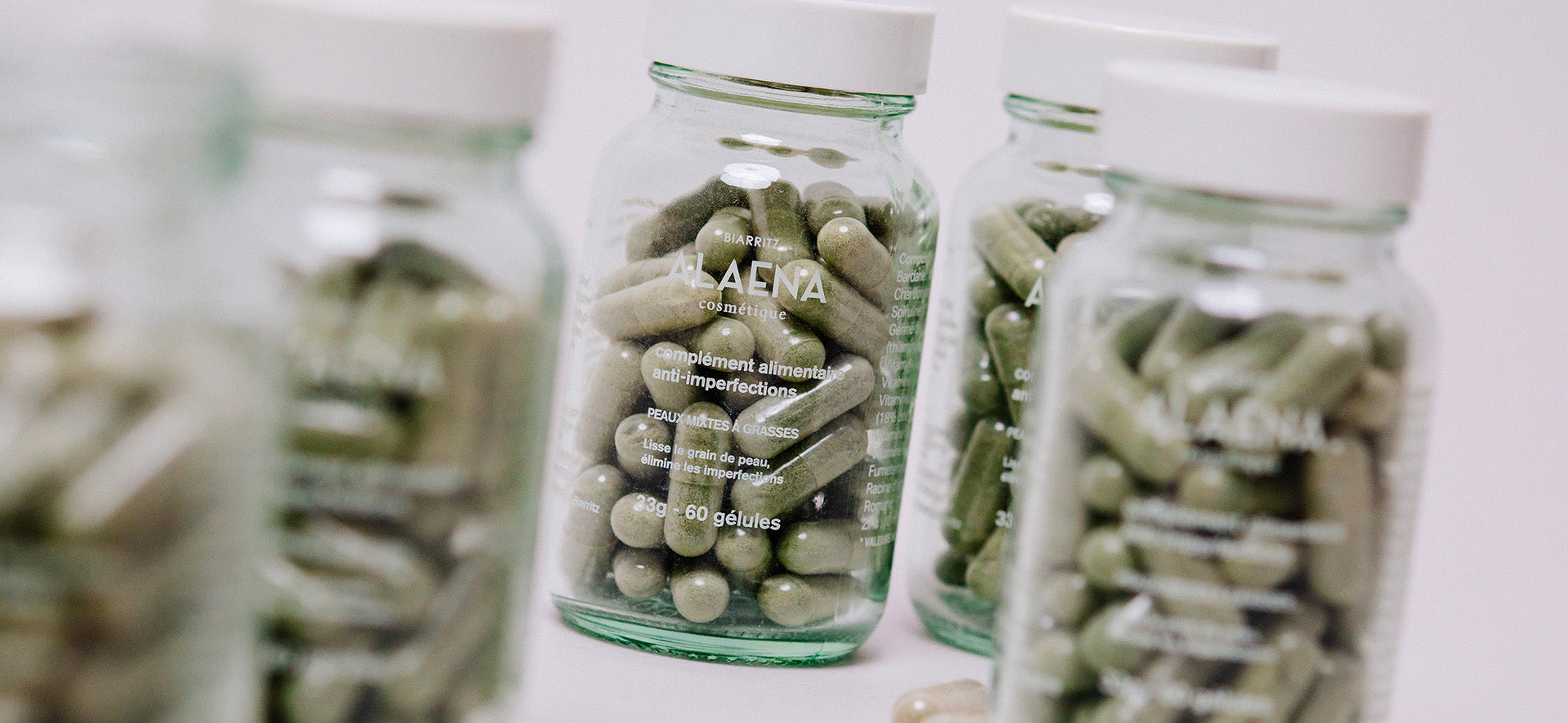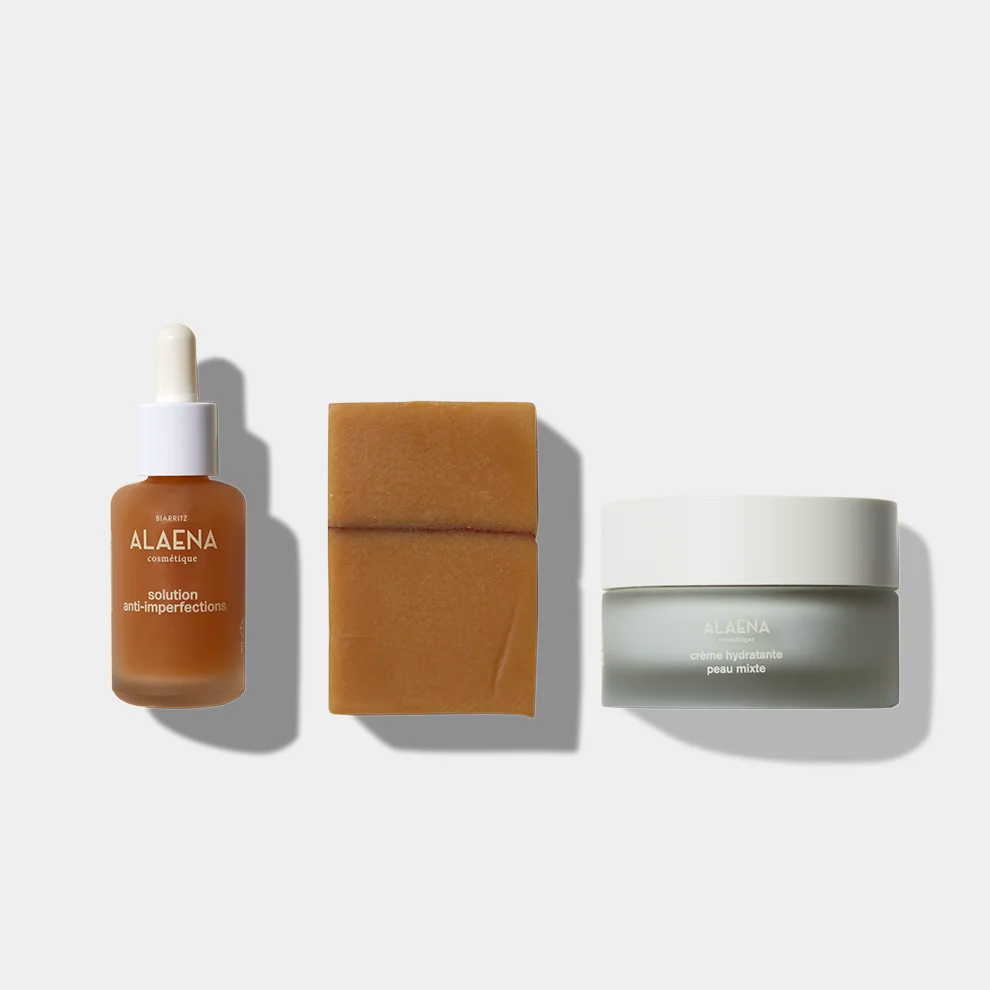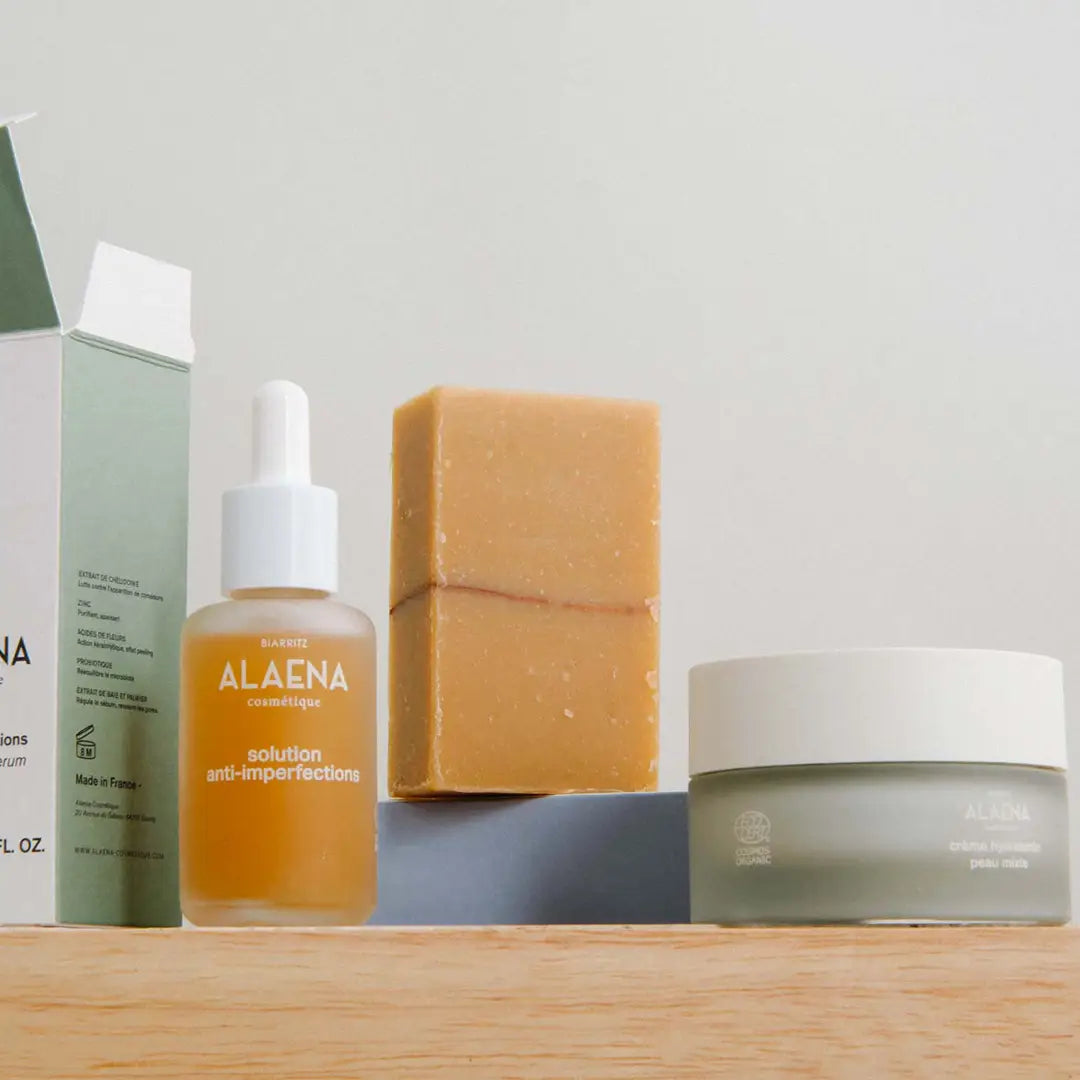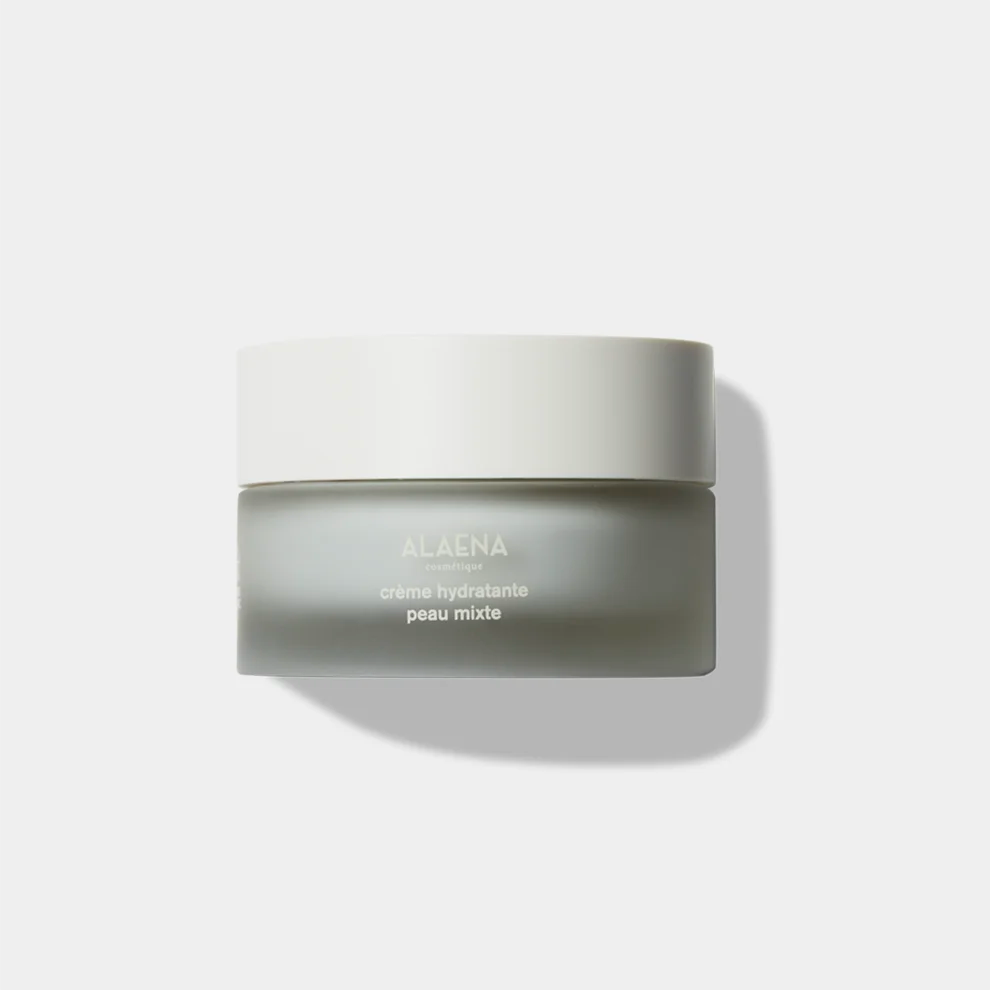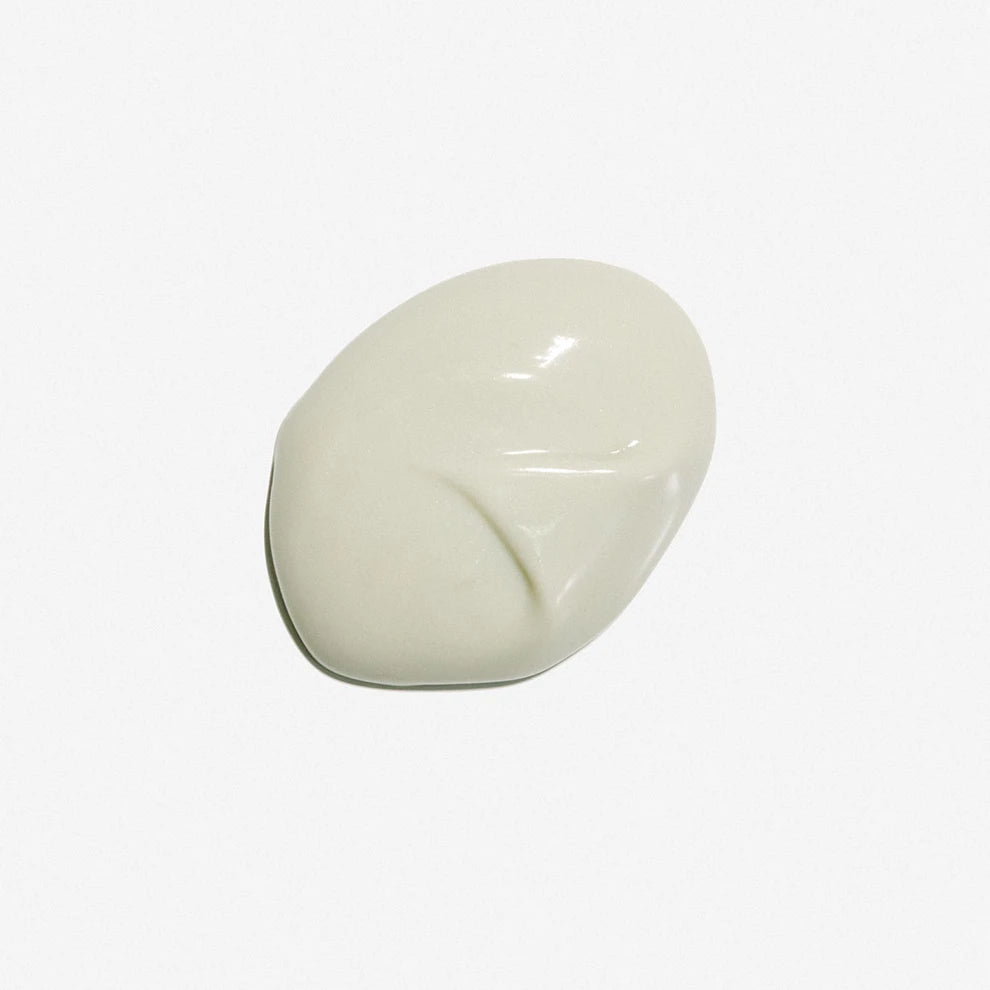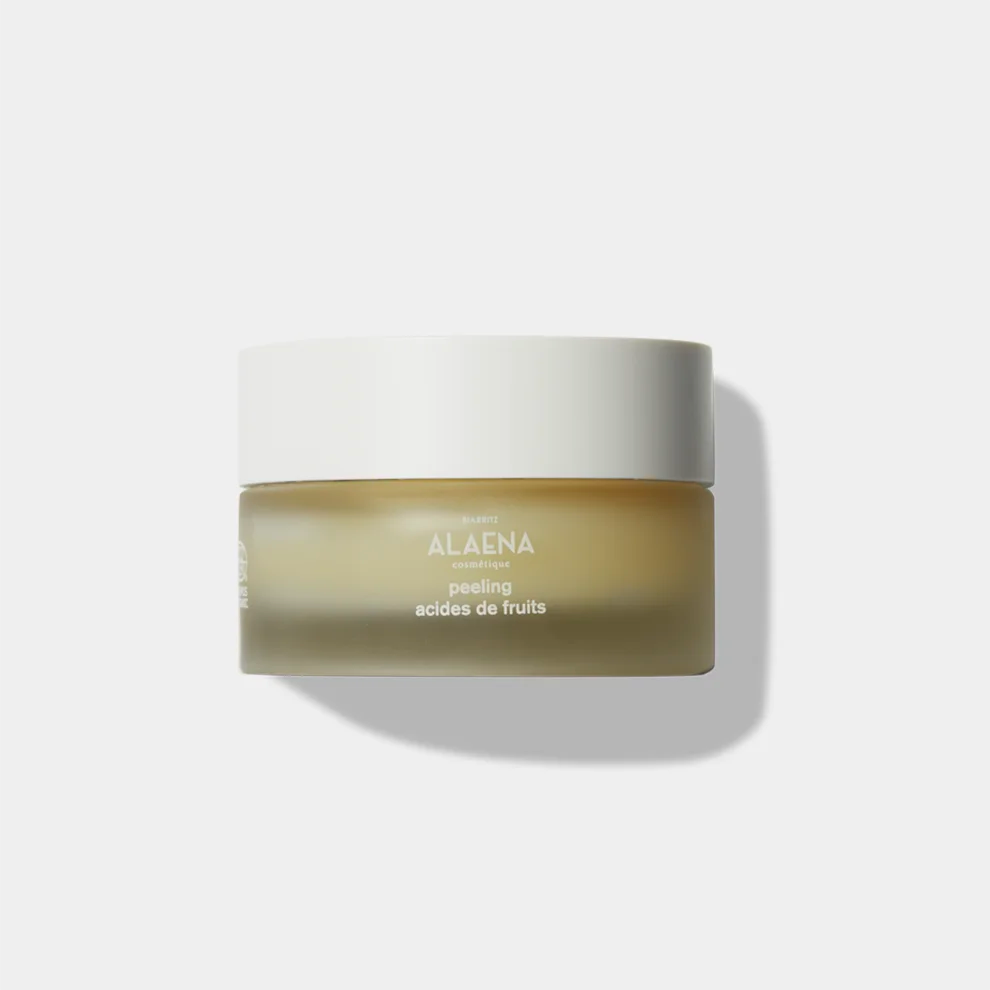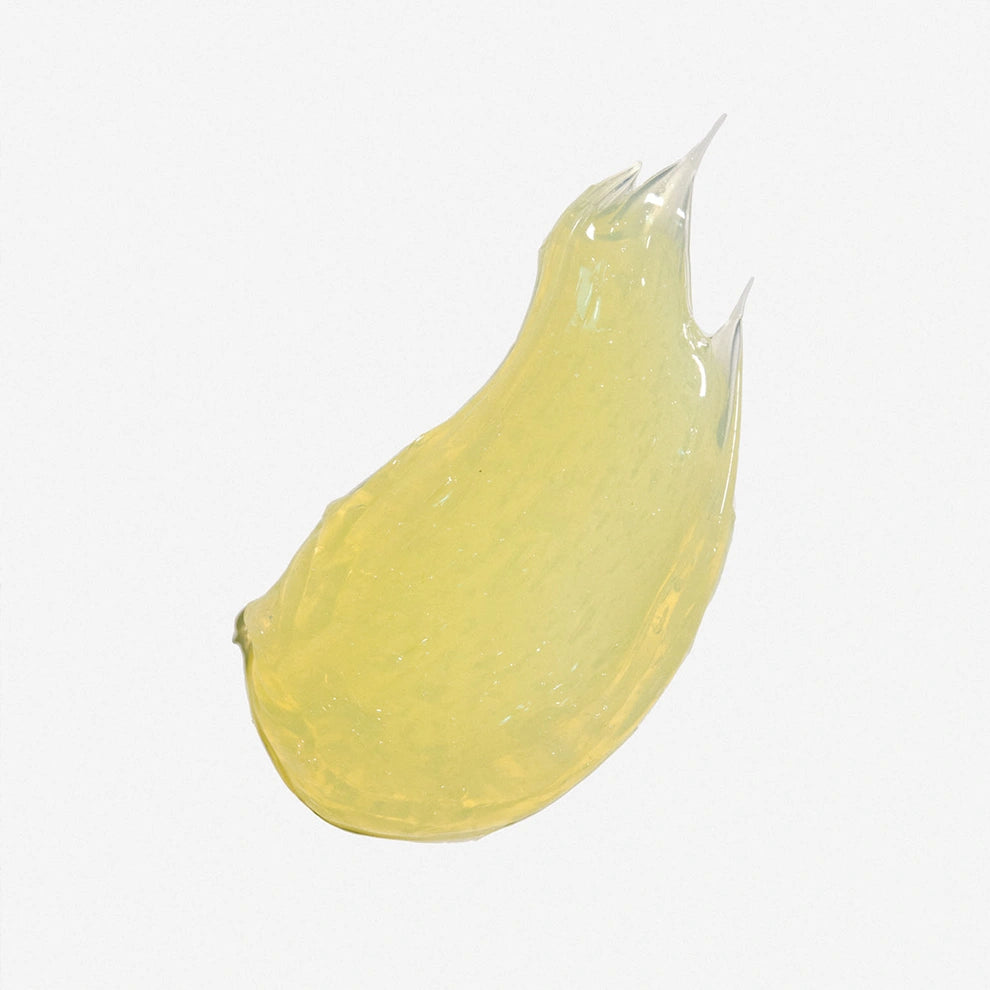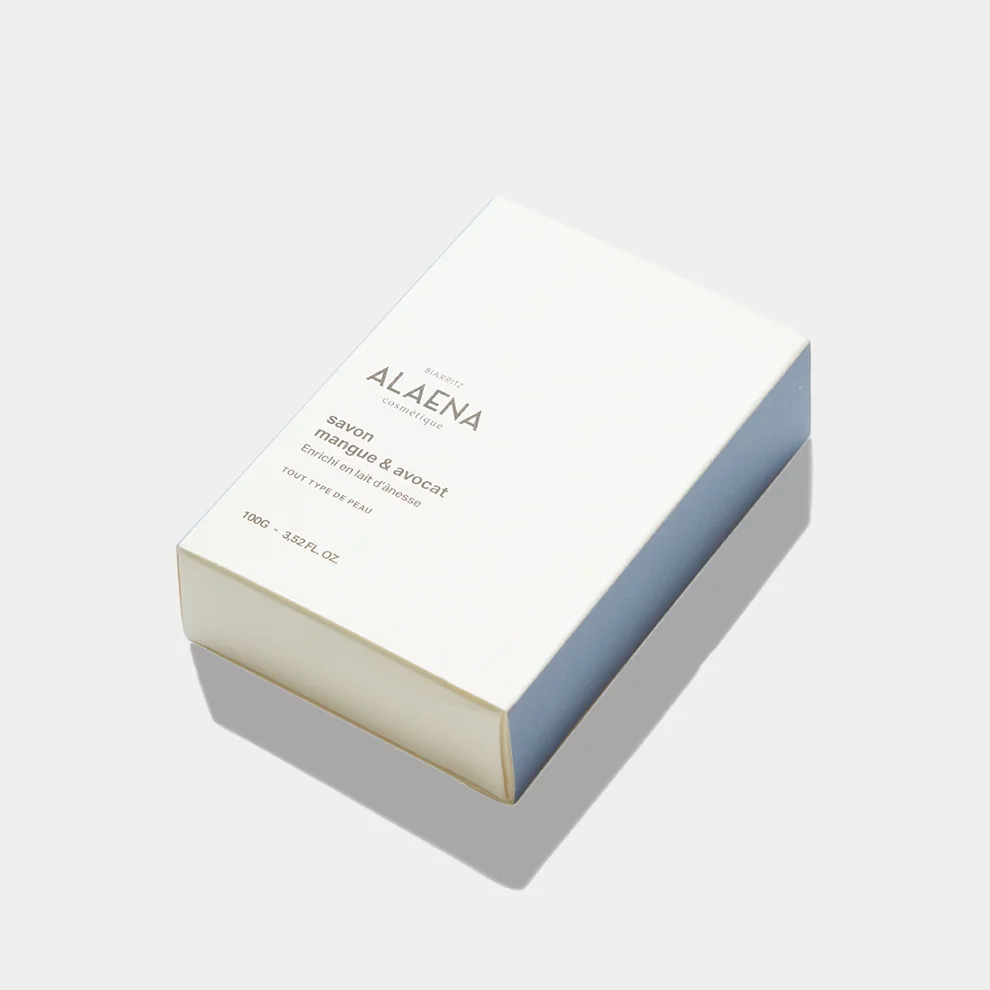Guide acné
Comprendre l'acné
Vous trouverez ici les clés afin de comprendre les causes de cette pathologie, les mécanismes en jeu et comment les traiter.
Pathologie autrefois réservée à l’adolescence, l’acné est aujourd’hui une problématique rencontrée par de plus en plus de femmes adultes. La mise en place de ces recommandations doit vous permettre à la fois d’améliorer la qualité de votre peau mais aussi un mieux-être général et d’éviter d’autres pathologies car les causes de l’acné révèle quelques déséquilibres globaux qu’il est important de traiter.L’acné est une maladie dermatologique fréquente qui se caractérise par la présence de comédons, points noirs et microkystes souvent rouges (inflammatoires), volumineux et blanc (excès de sébum). Ces lésions se situent principalement au niveau du visage (joues, front, menton), du cou et du dos. A plus long terme, elle peut donner lieu à des cicatrices persistantes c’est pourquoi il est important de les traiter rapidement. Il est important de noter que l’acné est une maladie moderne, due à notre mode de vie occidental. En effet, l’acné est inexistante chez les peuples primitifs, au mode de vie non industrialisé.
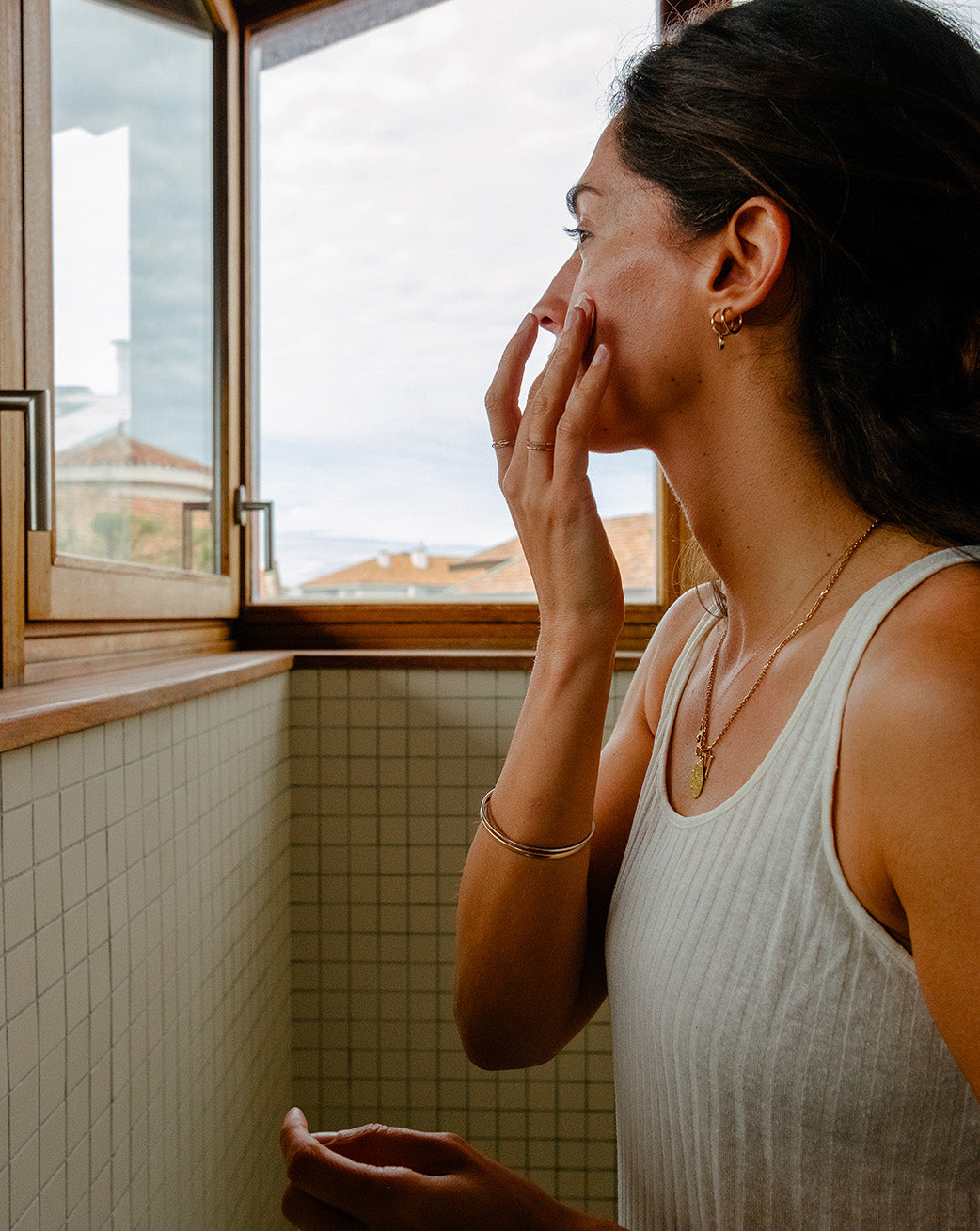
Quelles sont les causes de l'acné?
L’acné est une pathologie inflammatoire chronique de l’unité pilosébacée (voir schéma). La glande sébacée produit du sébum, participant au maintien de l’hydratation de l’épiderme, à sa souplesse et à sa douceur ainsi qu’à l’équilibre de la flore bactérienne cutanée (microbiote cutané). Le fonctionnement des glandes sébacées est lié à l’activité hormonale : la production de sébum est notamment plus grande à l’adolescence ou pendant la grossesse, périodes de forte activité hormonale.
L’acné est la conséquence directe de trois phénomènes :- La séborrhée, consistant en une production excessive de sébum- Une hyperprolifération des cellules de la peau- Une prolifération de la bactérie C. acnes entraînant une inflammation cutanée (relief sur la peau et rougeurs).Les trois phénomènes cités précédemment sont eux-mêmes la conséquence de différents facteurs qui interagissent entre eux :- Les cellules de la glande sébacée sont très sensibles aux hormones (insuline, IGF-1, androgène). Lors de troubles hormonaux, la production de sébum est altérée (qualitativement et quantitativement), le canal à l’entrée de la glande sébacée se bouche et les phénomènes inflammatoires naissent. Les excès d’androgènes, d’oestrogènes, la puberté et les différentes fluctuations hormonales chez la femme (pilule, stérilet, grossesse) donnent lieu à des changements hormonaux qui peuvent avoir un impact sur l’acné.
- Le rôle du microbiote cutané - ensemble des microorganismes présents sur la surface cutanée. Lorsque le microbiote cutané est équilibré, de bonnes bactéries limitent la croissance de C. acnes (toujours présente également) et limitent la réaction inflammatoire. Mais toute infection, agression ou résistance bactérienne due à une prise d’antibiotiques peuvent provoquer une surcolonisation par C. acnes et un déséquilibre dans la composition du microbiote cutané, provoquant l’inflammation cutanée. Dans le traitement de l’acné, il ne faut donc pas enlever C. acnes mais rétablir l’équilibre et la présence d’autres bactéries.
- Les facteurs environnementauxjouent un rôle majeur dans la pathologie de l’acné car ils favorisent un processus inflammatoire et fragilise le microbiote (cutanéet intestinal). Le stress, le manque de sommeil, la prise répétée de médicaments, le tabac, une mauvaise alimentation, des cosmétiques inadaptés sont des facteurs qui risquent de participer au développement de l’acné.
- Les prédispositions génétiques: les personnes dont les parents ont eu des problèmes d’acné ont plus de chance d’en souffrir à leur tour. Ce processus héréditaire est aujourd’hui expliqué par l’hérédité du microbiote cutanée.Comprendre l’origine de l’acné est important afin d’établir un rituel adapté afin de :rééquilibrer le microbiote cutané sans l’agresser réguler la sécrétion et la composition du sébum diminuer l’inflammation.
Comprendre l’origine de l’acné est important afin d’établir un rituel adapté afin de :- rééquilibrer le microbiote cutané sans l’agresser
- réguler la sécrétion et la composition du sébum
- diminuer l’inflammation
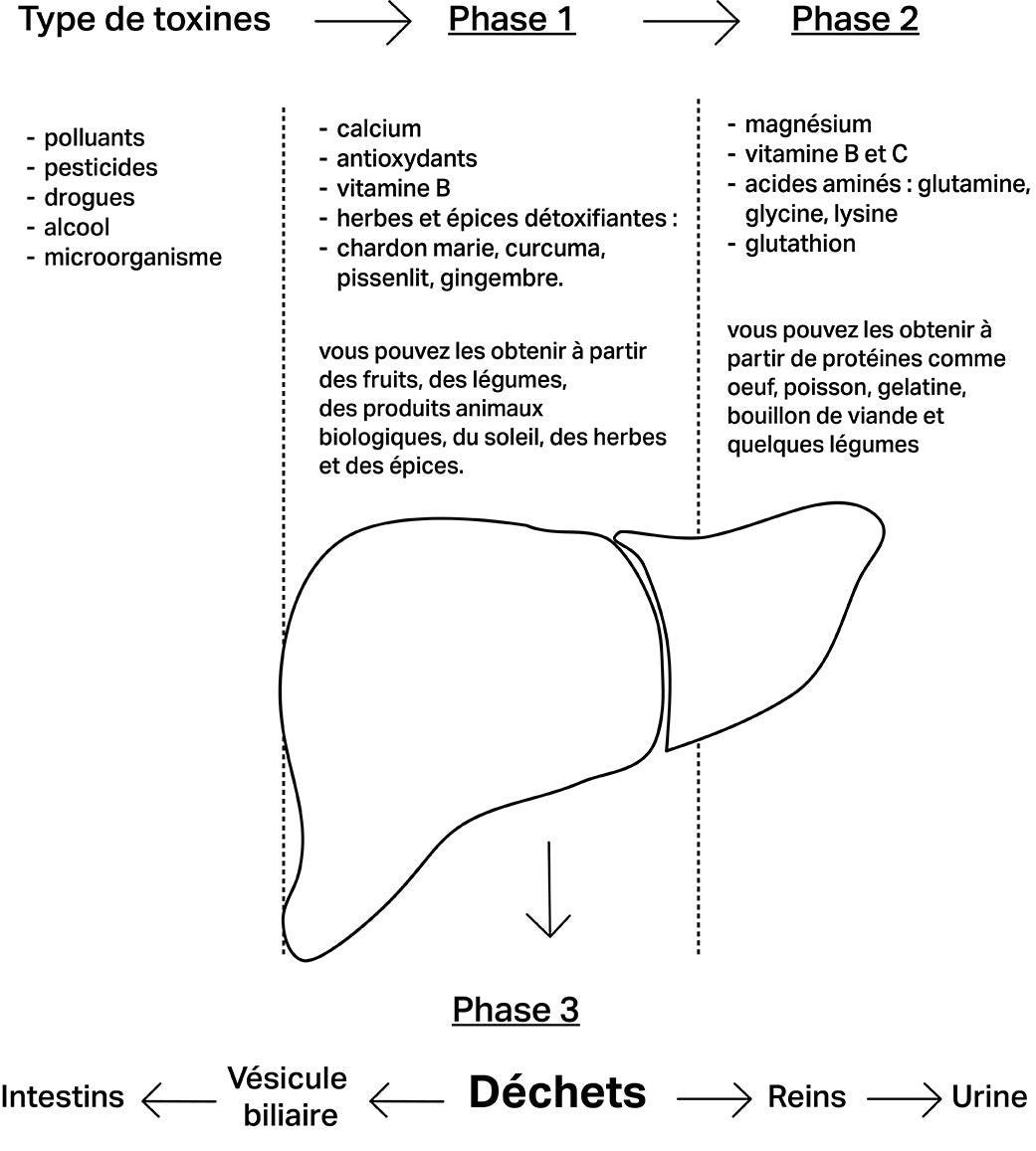
La détoxification du foie
Les fonctions du foie :
- stocke les graisses et les sucres sous forme de glycogène, il fabrique des lipoprotéines pour transporter les lipides, le fer (ferritine)
- distribue les nutriments venant de l’intestin vers les organes qui en ont besoin
- synthétise les facteurs de coagulation, l’hormone de croissance, des vitamines (vitamine D)
- permet la digestion des corps gras grâce à la bile La detoxification du foie permet de trier et éliminer les toxines, déchets de l’organisme grâce à des enzymes comme le cytochrome.
Les toxines sont :
- endogènes comme les hormones ; le foie est en particulier très important pour l’élimination des androgènes qui ont un rôle clé dans l’acné,
mais aussi - exogènes comme les médicaments, le tabac, l’alcool, les pesticides et autres produits chimiques dont les perturbateurs endocriniens
Le complément alimentaire anti-imperfections
Comment agit le complément alimentaire anti-imperfections Alaena?
Le complément alimentaire anti-imperfections Alaena va agir sur toutes les étapes de la détoxification hépatique en apportant les cofacteurs nécessaires.
Chardon marie
Phase 2 anti-inflammatoire et antioxydante
Il protège les hépatocytes et évite l’engorgement par les graisses (stéatose hépatique). De plus, il régule le métabolisme glucidique en réduisant l’insulino-résistance.
Romarin
Agit sur les phases 1 et 2 de la détoxification hépatique
Grâce à l’acide carnosique et rosmarinique, mais en stimulant la circulation sanguine il aide à l’élimination des toxines en Phase 3. Il est aussi hypolipémiant et régulateur de glycémie. Enfin il a des vertus désinfectante et anti inflammatoire bénéfiques sur les lésions d’acné.
Racine d'ortie
Elle agit en phase 3
par son action sur le maintien de la fonction rénale et l’élimination des toxines par voie urinaire. Elle est aussi reconnue pour son action sur la 5 alpha réductase, enzyme qui transforme les œstrogènes en androgène au niveau de la peau. Elle exerce donc une action anti-séborrhée
Bardane
Phase 2 anti-inflammatoire et antioxydante protège les hépatocytes et évite l’engorgement par les graisses (stéatose hépatique). De plus, il régule le métabolisme glucidique en réduisant l’insulino-résistance.
Germe de Sarrasin
Titré en vitamine B, il s’agit d’un important cofacteur de la détoxification hépatique(phase 2)
Spiruline
Co-facteur de la phase 1 et de la phase 3 riche en fer, acides aminés, vitamines B, minéraux et oligo-éléments
Zinc
Ses propriétés anti-inflammatoires et antioxydantes, aident à prévenir la formation de lésions acnéiques et les rougeurs associées à l’acné. Il va également jouer un rôle important pour accélérer la cicatrisation des lésions.
Fumeterre
Durant des siècles, on a employé la fumeterre pour faire disparaître les maladies de peau. La plante est recommandée pour normaliser la sécrétion biliaire et réduire les spasmes biliaires douloureux. Elle est également utilisée pour atténuer les souffrances des migraines d’origine hépatique.
À qui s'adresse le complément alimentaire anti-imperfection Alaena?
✔ Acné, hyper-androgénie, syndrome des ovaires poly-kystiques (SOPK)
✔ Personnes sous pilule contraceptive, hyper-oestrogénie (tension mammaire, fibrome)
✔ Personnes souffrant de syndrome pré-menstruel
✔ Prises médicamenteuses (surcharge la fonction hépatique), contact accru avec la pollution ou autres produits chimiques (tabac, alcool, pesticides)
✔ Migraines, fatigue chronique, troubles du sommeil en particulier réveil après 4h du matin
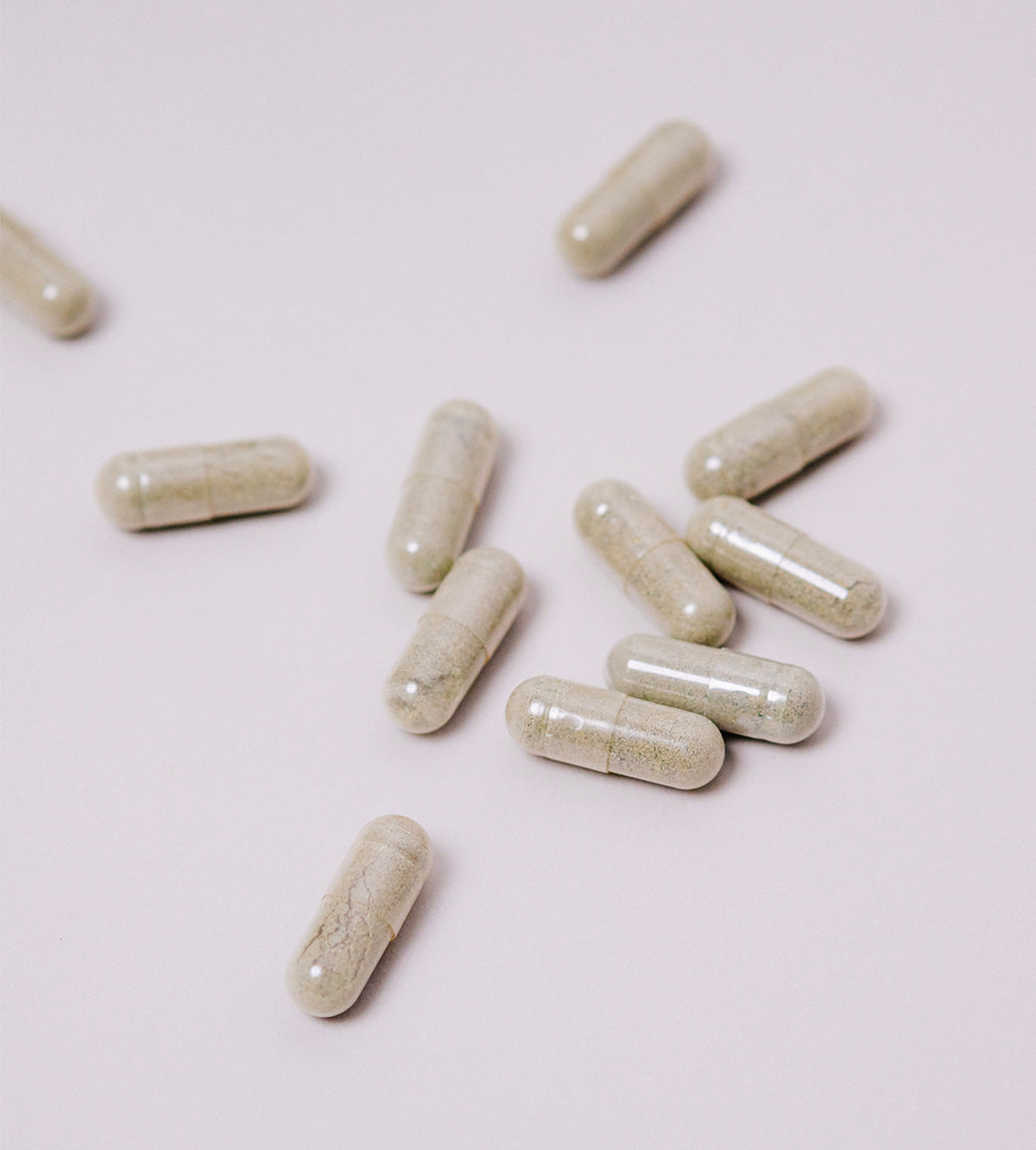
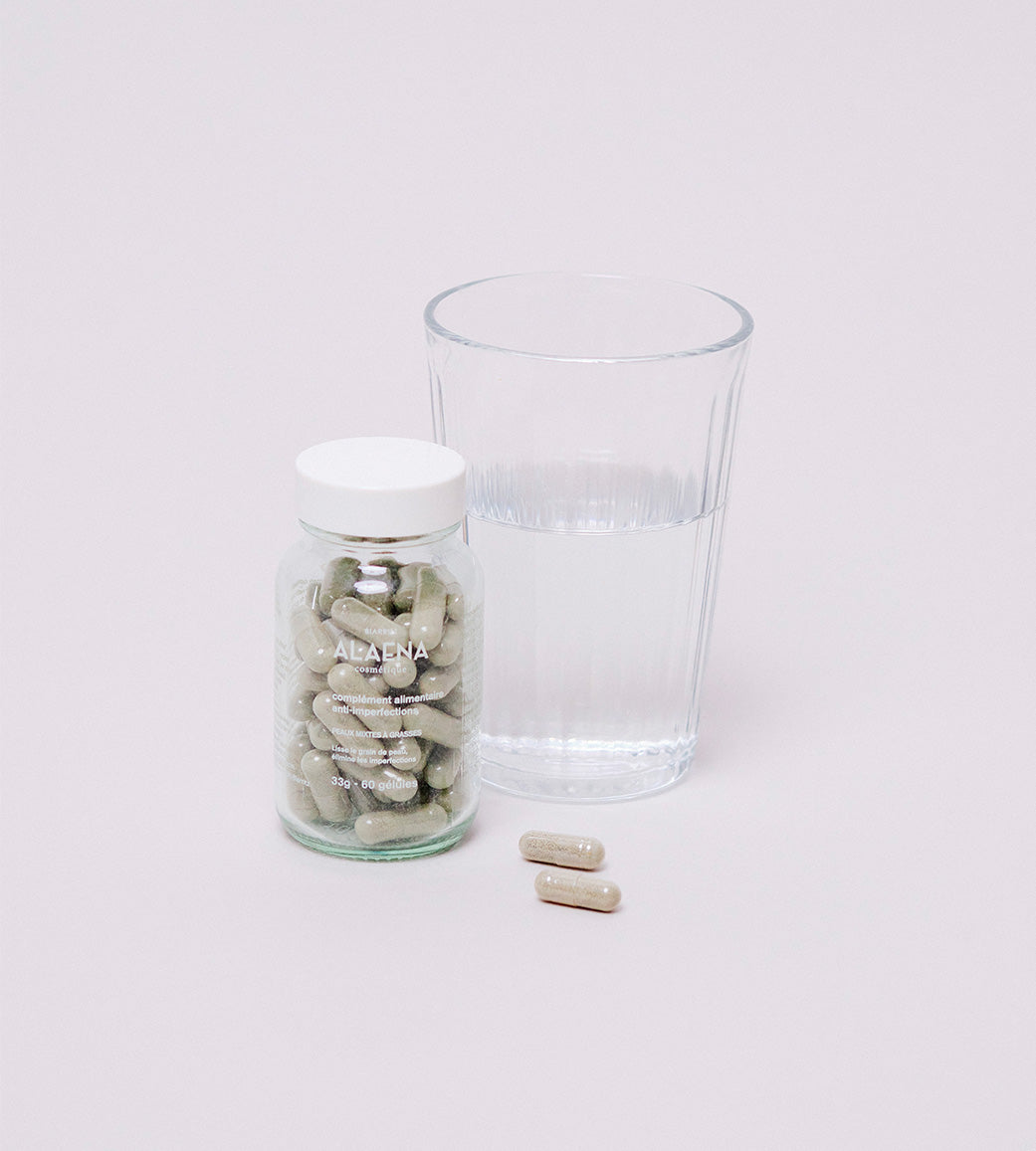
Utilisation
2 gélules le matin avec un verre d'eau, à jeune de préférence.
Si cela vous est désagréable, vous pouvez le prendre au cours du petit déjeuner.1 pilulier = 60 gélules = cure de 1 mois
Rituel anti-imperfections
Vais-je constater une phase détox sur ma peau?
Dans l’acné le sébum produit contenant des toxines est pro-inflammatoire. La detoxification va favoriser l’élimination de ces toxines, réguler le métabolisme des glucides, des lipides et des androgènes. Pendant cette période de « nettoyage », une poussée d’acné est possible.
Celle-ci peut durer jusqu’à deux mois avant de constater une guérison durable de votre acné. Vous verrez en revanche rapidement les bienfaits sur l’éclat de votre teint, l’amélioration du grain de peau et le confort digestif.
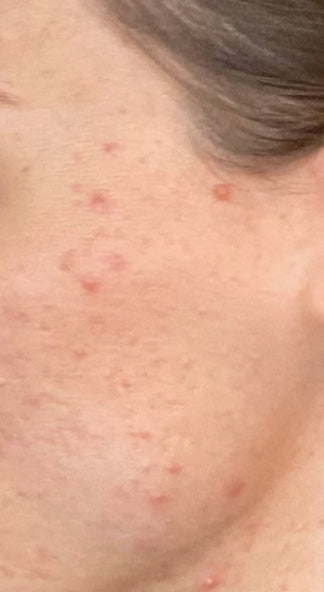
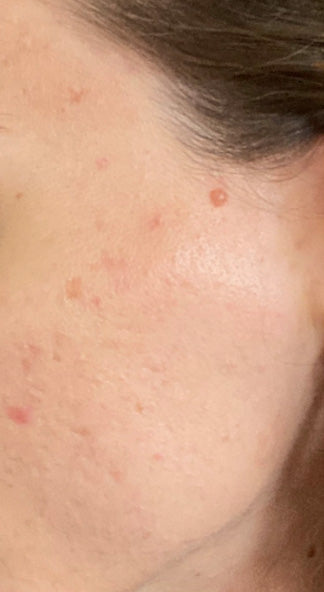
Résultats
Des tests réalisés sur 30 patients du Dr Sylvie Peres dermatologue.
100% des patients indiquent ressentir leurs boutons moins enflammés.
92% des patients indiquent ressentir leurs boutons diminuer.
90% des patients indiquent ressentir leur teint plus éclatant.
90% des patients indiquent ressentir une amélioration sur leur digestion et transit.
83% des patients indiquent ressentir leur peau moins grasse.
Faut-il prendre le complément en cure ou en continue?
Nous recommandons une cure de 3 mois minimum pour constater l’ensemble des effets. Les bienfaits sur l’éclat du teint arrivent rapidement ainsi que l’amélioration du grain de peau et du confort digestif.
Cependant vous pourrez constater une période de « nettoyage » où une poussée d’acné est possible.
Celle-ci peut durer plusieurs semaines avant de constater une guérison durable de votre acné.

